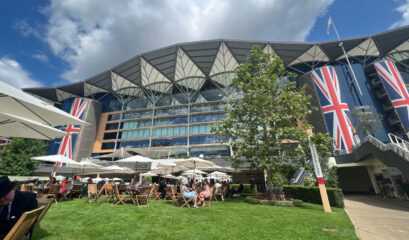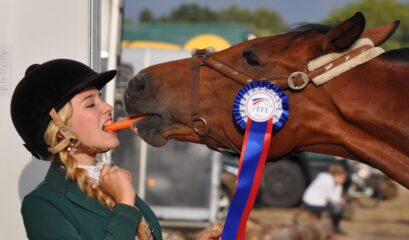Our vision for the future
Embracing sustainability
Our vision is to make chauffeur-driven luxury travel as sustainable as possible. In 2006, we pioneered hybrid vehicles. Today we are pushing the next generation of all-electric luxury chauffeur cars. But this is not enough.
Carbon Offsetting
We compensate for unavoidable emissions by carbon offsetting.
We first started offsetting carbon in 2007, with help from an environmental expert.
We compensate for unavoidable emissions by carbon offsetting. Today we would like to share where our 2021 offset contributions are invested.
We have partnered with Carbon Footprint, an award-winning ISO 9001:2015 certified provider. They are founding members of the Quality Assurance Standard (QAS). This Hampshire business offers online carbon calculators. which make it easy to calculate vehicle emissions in particular.
They have a comprehensive portfolio of offsetting projects to choose from.
Keo Seima Wildlife Sanctuary
Reducing deforestation and degradation
For 2021, we have chosen to help reduce deforestation and degradation in Keo Seima Wildlife Sanctuary.
The sanctuary is a protected area in eastern Cambodia, in Mondulkiri and Kratié provinces. The area was first established as Seima Biodiversity Conservation Area in 2002. Becoming Seima Protection Forest in 2009. In 2016 it became the Keo Seima Wildlife Sanctuary.
The site is of national, regional, and global importance for a range of biodiversity. with more than 950 species within the protected area. It is also the ancestral and contemporary home of a large number of the Bunong ethnic group.
“A better strategy would be to spend money on strengthening the land rights of indigenous people, who tend to be the most effective guardians of ecosystems and the carbon they contain. Where communities don’t own land, they should be funded to buy it back and restore its missing habitats. But none of these projects should be counted against the fossil fuels we should leave in the ground.”
Deforestation
Nothing is more precious than our ancient forests
Deforestation is the cutting of trees to make room for something besides forest. Deforestation can include clearing the land for farming or livestock. As well as using the timber for fuel, construction or manufacturing.
Deforestation affects the people and animals that live there. And the wider world.
The world is trying to slow climate change, preserve wildlife, and support billions of people. Trees are crucial to the solution.
Yet the mass destruction of trees continues to sacrifice the long-term benefits of ancient trees, for short-term gain.
As trees photosynthesise, they produce hydrocarbons, which fuel their growth. Over the course of their lives, they store up to 22 tons of carbon dioxide in their trunks, branches, and root systems.
Today’s deposits of fossil fuels come from trees that died about 300 million years ago. This remanent of ancient sunlight generated fuel.
The older the tree, the more quickly it grows. Trees with trunks 3 feet in diameter generate three times as much biomass as trees half as wide.
The forest elders are full of energy and markedly more productive than their younger family members. When it comes to climate change, ancient forests are the gold standard.
Their destruction causes a massive release of dormant carbon stores in itself.
Stopping deforestation offers proven, instant, and immediate climate benefits. That also help preserve biodiversity. A culture which has taken hundreds of millions of years to develop.
In a very real sense, we’re all made out of sunlight.
“Let’s start at the beginning, with the fuel source that gave life to this planet millions of years ago: sunlight. We’re Made Out of Sunlight The Sun, the hearth of affection and life, pours burning love on the delighted earth.”
You can not simply engineer an ancient forest
Nothing is more precious than our ancient forests
If you read The Hidden Life of Trees by Peter Wohlleben you will know that humans do not plant trees as well as trees do.
You will also know that the slow growing trees in ancient forest are stronger, tougher and live for many centuries.
If you haven’t read The Hidden Life of Trees, you will learn that trees in forests, and in particular ancient forests, communicate with each other. But it will leave the reader with a greater appreciation for these majestic life forms.
They have feelings.
They can detect danger. Such as approaching giraffes. The trees respond with chemical warfare. Instantly producing a chemical giraffe repellent in their veins to discourage munching.
They also take care of each other.
They share nutrients through the fungi networks which connect to the trees roots. Trees in poorer soil will be fed by their family, because it is better for all them to be of a similar height. This helps them deal with extreme weather.
Biodiversity
The natural ecosystem
Biodiversity is all the different kinds of life you’ll find in one area. The variety of animals, plants, fungi, and microorganisms that make up our natural world.
All species and organisms work together in ecosystems to maintain balance and support life.
Biodiversity supports everything in nature that we need to survive: food, clean water, medicine, and shelter.
Safeguarding biodiversity
In support of our natural ecosystem
Ancient forests support a rich biodiversity of all organisms, big and small. We must do our utmost to protect these precious areas.
If we want to use forests as a weapon in the fight against climate change, then we must allow them to grow old. Which is exactly what large conservation groups are asking us to do. It also helps support and defend against the loss of biodiversity.
Nonprofit’s like the Forest Stewardship Council, and the Rainforest Alliance certify sustainable products. The World Wildlife Fund has a palm oil scorecard for consumer brands.
Sustainable travel
Reducing our carbon footprint
We realise that our emissions are contributing to climate change. But after a challenging couple of years we are still pushing towards an all-electric fleet.
The Mercedes EQV people carrier/van offers all-electric drive. It has all the comfort and style of the internal combustion engine (ICE) powered V-Class on which it is based.
We also offer hybrid S-Class as well as hybrid Range Rover vehicles.
Rolls-Royce are testing their first electric car, the Spectre. Which means the super-luxury sector joins the EV revolution.
By offsetting carbon we are helping to balance are carbon books. By choosing to focus on deforestation we feel we are helping to protect the most valuable asset on Earth. Our ancient forests.
Get in touch
Please contact us if you want to learn more about our award-winning chauffeur car service.









